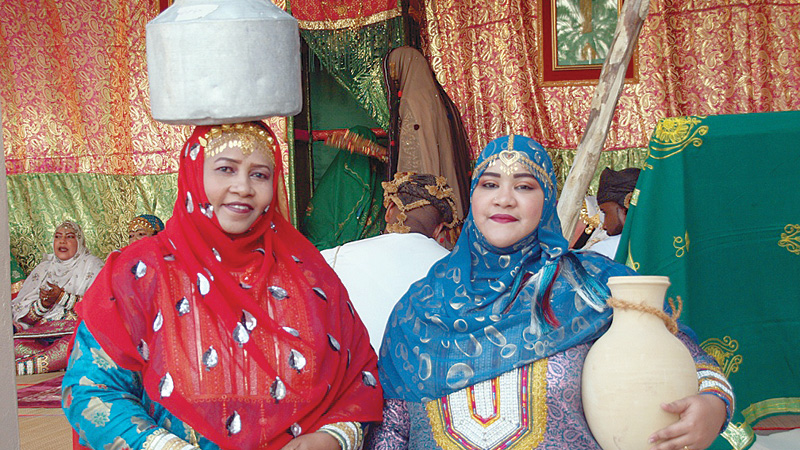

KABEER YOUSUF -
Muscat, Jan 25 -
Time transcends all, be it the technological advancements that mankind has evolved with over a period of time, or the changes that were brought in by the human brains. All these paradigm shifts in our lifestyle stop at the Heritage Village at the Muscat Festival grounds which showcase the life of a time gone by.
In the vast corner where Oman’s yesteryear is living in its full vigour, one can find the clothes that earlier generation used to wear, the tools they used for a living, the houses they lived, the accessories they wore, the food, the pots and pans, the lamps, the metal locks, the cutlery and everything that surrounded them — but one thing remains unchanged — the hospitality of the Omani people.
Oman’s time-tested cultural and historical heritage, rich in an inherent culture and authentic heritage, their strong bonds with the environment and society is reflected in their authentic fashion, traditional arts and customs.
The castles, fortresses, towers and monuments of the Sultanate tell the manuscripts that were unique to the country… simply, time stops right in front of our eyes when we are inside the heritage village.
“This corner of the Muscat Festival is a window to the past for it has a unique collection of antiques, clothes and tools which are the results of our several years of hardwork and research, and is a mirror to the bygone era”, said Shaikh Sultan bin Ahmed al Harthy, General Supervisor of the Museum at the village.
The exhibition of manuscripts and rare antiques at the village includes artifacts from the history which trace back to thousands of years while some are hundreds of years old.
The Sultanate has rich and distinctive traditions of folk arts that celebrate their festivals with, such as the art of Rizha, and Al Azazi, which are still an inevitable part of weddings, religious festivals, national festivals and other celebrations.
The replica of old castles, a wooden machine that they used to grind coffee and other grains, weighing machines and measurements they used in barter society, the collection of rare manuscripts and hand-drawn manuscripts, and rare soap dishes made in BC period, all tell us a manifold of untold stories of life yesterday.
The participation of women from across the wilayats is a highlight for their presentations features the handicraft industries of women, which included manufacturing of daggers, besides other craft industries, tailoring and the like that were part of a life when empowerment was not even heard of.
Arabian horses occupy a distinctive place globally today, but they were a part of the lifestyle in the villages then. Villages used to breed horses, and the mode of transportation was, besides camels, horses, ponies and mules. A diverse range of horses can be found at the village galloping back to
a timeless age.
A view of the diverse heritage and historical architecture, a display of the aflaj, that were the blood vessels of agriculture are some other treat to one’s senses at the Heritage Village.
Oman Observer is now on the WhatsApp channel. Click here



